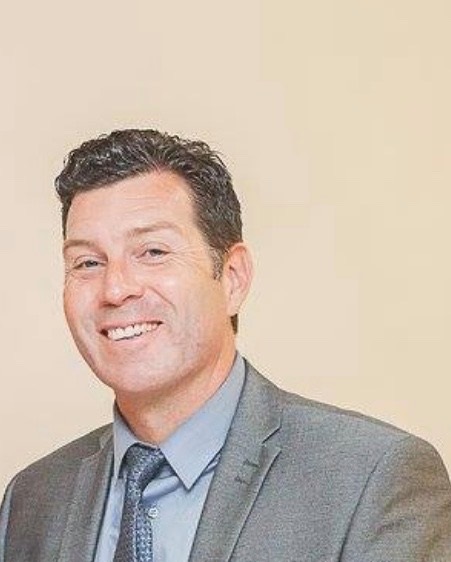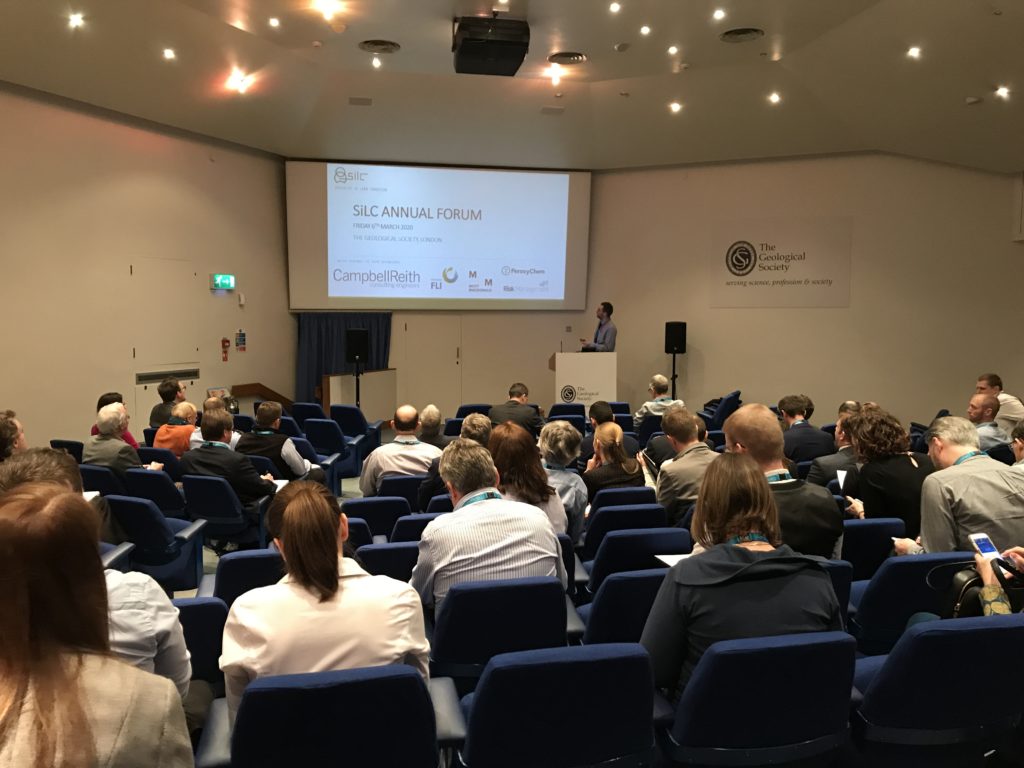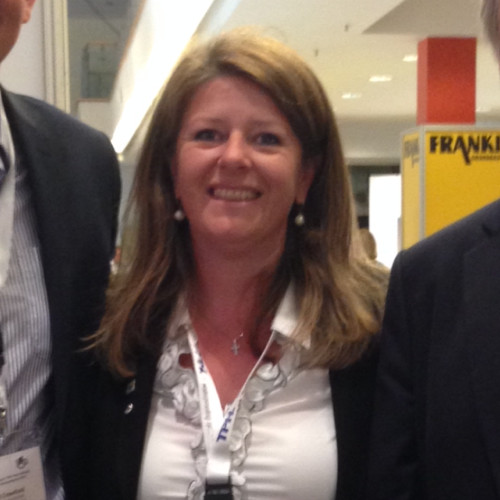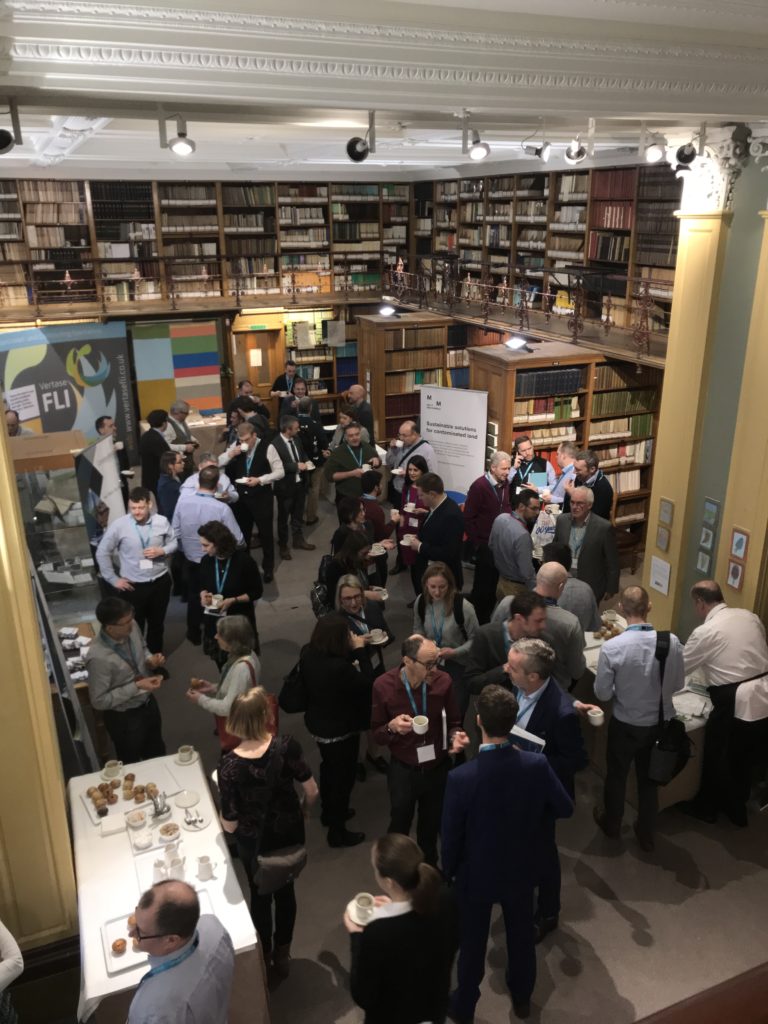Full Name: Chaido Doulala-Rigby (Yuli)
Job Title: Business Development and Chief Civil Engineer Eastern Hemisphere (EH)
Company: Tensar International Limited
My engineering journey started in Greece where I was born, grew up and got my first degree in Civil Engineering. In my 26 years engineering career so far, that spans across the globe, including 10 wonderful years in Hong Kong working as a Geotechnical Engineer, I feel blessed to have been part of some extraordinary projects and to have met some truly amazing people both on a personal level and professionally.
Upon my return to the UK from HK some 14 years ago, I joined Tensar International and soon progressed to become the Chief Civil Engineer of the Company that invented Polymer Geogrid Technology and “revolutionised Civil Engineering” (as quoted in the ICE200 publication in 2018).
What or who inspired you to join the geotechnical industry?
I owe my initial ‘attraction’ to Geotechnics predominately to Dr Evan Passaris, who was a professor at Newcastle University upon Tyne back in the early 90’s and encouraged me to do their MSc in Rock Mechanics and Foundation Engineering. Upon my MSc completion in 1994, I joined the Jubilee Line Extension (JLE – Contract 102) that was under construction in London, working as a graduate tunnel engineer for Balfour Beatty/Amec JV. At the time, JLE was the largest Civil Engineering project in the UK and still remains one of the most expensive projects in the world of all times at over £4 million per meter of its 16km length!
Looking back, I can confidently say that, while my MSc intrigued my appetite for Geotechnics, it was joining the JLE tunneling project that cemented my decision to follow Geotechnics. It taught me to expect the unexpected when dealing with soil, which fascinated me and encouraged me to further explore the weird and wonderful world of Geotechnics. And here I am, just over a quarter of a century later, still in Geotechnics and still loving it!
What does a typical day entail?
There is no such a thing as a ‘typical’ day and I guess that’s the best part of being an engineer, no 2 days are the same! I love travelling and I love educating people from all backgrounds about the magnificent performance of geosynthetics and especially Tensar’s leading geogrid technology. My current role is largely a combination of both. It is quite a demanding role, that I enjoy enormously, but I have worked very hard to earn it and I still work even harder to keep up with its ever-expanding nature. Many people say I am ‘lucky’. But I don’t believe in ‘luck’. I believe we can all create our own ‘luck’, and I find that the harder I work, the ‘luckier’ I get, meaning the more I get invited to travel for Tensar. What the people that call me ‘lucky’ don’t know is the amount of preparation that goes behind the ‘glamour’ of travelling. There are many reasons for my work related travel: to present bespoke technical papers that I author to International Conferences, to deliver bespoke design training to Tensar’s various EH offices that I look after, to present our cost, time and value message to suit specific Clients’ requirements, to present our latest R&D research to technical forums, to participate to committee/panel meetings, to do STEM talks and/or activities with hundreds of school children and students, to review, interview and judge technical submissions of Industry projects’ entries on behalf of various independent Industry Awards such as Ground Engineering, ICE, Engineering Trust etc. What people that call me ‘lucky’ don’t see is the ‘red eye’ car, train and/or flight journeys that I take to get me to my destination on time and in the most efficient way and the weekends and early mornings or late nights that I spend on my kitchen table writing or assessing papers and preparing for my bespoke presentations. A large part of what I do is indeed voluntary and outside my normal, ‘day job’ working hours not because I ‘have to’ but because I choose to do so. Having gained so much experience in Geotechnics and in Engineering at large over the years, it gives me great joy and pleasure to be able to share my knowledge and give back to the engineering community, whether it is by participating in committee work, Industry award judging or getting involved in STEM work.
My ‘day job’ involves fast-track live project risk management by directing, advising, checking and indeed carrying out designs for Tensar’s multidisciplinary applications requests that land in my inbox daily from all over the world. Enquiries can vary from as simple as: “What fill can be used to build a 3m high car park retaining wall with your geogrids?” to “Can we build a 30m high dam with your geogrids?” to “Can you help us support a ~3,000ton crane over soggy paddy fields in Vietnam?!”. Or from: “Can you represent the ICE and talk about What Is Civil Engineering to students in an upcoming Engineering Day event at a University in Manchester” to “Can you come to Peru next month to present Tensar’s containment capabilities to a mining Client”! So two days are never the same and it is this unpredictable variability of what I do that I love the most, not knowing what soil type, request or idea tomorrow brings! Undeniably, there are times that managing my ever-evolving to-do list can get frustrating too, but after all these years, I have learned to know when to close my laptop and remind myself, and other like-minded colleagues, that ‘tomorrow is another day’.
Are there any projects which you’re particularly proud to have been a part of?
I take pride in every single project that I get involved with. But if I had to choose a single construction project that I got involved with in my career so far, it has got to be Tensar’s tallest geogrid reinforced soil embankment walls in Fujairah, UAE, that were constructed in 2011. The project was a massive cut and fill exercise whereby in-situ Gabbro mountains were blasted to create rock cut slopes with heights in excess of 100m, while the blasted rock was crushed and reinforced with our geogrids to form massive 60m high soil embankments to cross the valleys in between the mountains to support a new freeway connecting Dubai with Fujairah port. Our reinforced soil embankments replaced the originally proposed viaducts due to the surplus of blasted rock available and due to the access and construction difficulties a viaduct construction would pose in such harsh and arid environment. I am very proud to have led the design and supply team of Tensar Engineers to deliver this project, that included remote resource coordination, multicultural team engagement, and many site specific design alterations that I had to manage under very tight deadlines to best fit unforeseeable and challenging geomorphological conditions that were encountered during construction. And a few amazing trips to the site too!
The other ‘project’, that I take immense pride to be part of, is my voluntary role as a registered STEM Ambassador, for which I am grateful to have Tensar’s full support. My involvement with STEM started in 2018, thanks to the British Army that invited me to role model my career in Civil Engineering to young female school students, at the first ever Army-supported STEM careers’ fair. The event, that saw 900 female students aged 11-18 participating, was organised at the Military Royal Academy Sandhurst in May 2018 in support to the UK Government that declared 2018 as ‘Year of Engineering’ in an effort to help close the skill and gender gap our Industry is facing. The same event was repeated in 2019 but expanded over two days and attracted 2,000 school students of both gender and it is due to be repeated in 2020 scheduled to reach even more students from even more remote regions and form more underprivileged backgrounds, proving that there are no boundaries to engineering and that engineering is for all.
What are the most challenging aspects of your role?
On a Company level, as the inventors and leaders of polymer geogrid technology for over 40 years, Tensar’s greatest frustration is that, together with other manufacturers now, despite the independently tried, tested and proven benefits of geosynthetics in reducing cost, time and carbon in earthworks construction, we are still trying to ‘convert’ vital sectors of our Industry like Highways and Railways and convince them to include geosynthetics in their design standards and codes, rather than still treating geosynthetics as a ‘departure’. In parallel, our added challenge is in trying to maintain top quality standards across the Industry and differentiate amongst the various geosynthetic products available in the market and their different functions. And although some companies, like Tensar, have invested a large amount of money to have our products independently tested, verified and certified in achieving a certain performance, unfortunately there are a lot of products available in the market that because they look the ‘same’, they claim that they perform the same. Our critical challenge is trying to keep up with defending our specification in our multiple live projects and trying to educate the Industry why ‘everything that looks like gold is not gold’. To this end, we have come together with other like-minded geosynthetics manufacturers and we succeeded in including some good guidance in two recent publications, namely the TWf Good Guide to Practice and the EFFC/DFI Guide to Working Platforms, whereby the advice to engineers is that, if they want to consider an alternative geosynthetic product, in a piling platform design for example, they MUST seek an alternative FULL design rather than just swapping with cheaper geosynthetics alone; each geogrid or geotextile performs and interacts with the available fill material in a completely different and unique way, which has direct impact to the working platform design thickness and performance.
On a personal level, working for a company with Global reach comes with quite a few challenges from managing different time zones, different design codes and indeed different cultures to keeping up with local Industry updates by making time to actively participate in various technical panels and committees, often international. And while everybody is talking about ‘devolution’, most such committee and panel meetings still take place in or near London. And despite all remote digital aids available such as Webex, Skype and Teams, in a lot of such discussions, face-to-face interaction is still irreplaceable. My challenge is to plan as far ahead as possible and try to keep my diary up to date so I can fit in as many meetings as possible in a single journey, especially as I live and work ‘up’ North, in Lancashire.
What AGS Working Group(s) are you a Member of and what are your current focuses?
I am a member of the Geotechnical Working Group of AGS. Our current focus is trying to investigate, assess and compliment, if necessary, the currently Industry standards and guidance on ground improvement techniques and especially vibro stone column and dynamic compaction and their post-construction validation testing on site. Other areas of current focus of our working group is EC7-Part 2, improving sustainability in current site investigation process and the increasing volume and cost of BSI publications and its impact on SMEs, just to name but a few.
What do you enjoy most about being an AGS Member?
I enjoy meeting and interacting with like-mined professionals from our Industry and working together towards the betterment of our Industry by sharing knowledge and lessons learned, identifying knowledge gaps and filling such gaps by collectively and/or individually writing and disseminating papers and guidelines.
What do you find beneficial about being an AGS Member?
Personally, I benefit from knowing that I can contact other AGS members for professional advice that I can trust whether on project-specific or Industry-specific issues.
On a Company level, we find receiving and reading the AGS magazine informative as it includes current Industry updates. We also greatly benefit from participating in the AGS Conferences both for networking but also for having the chance to openly voice, share and discuss our concerns and issues with the Industry. To that end, I was extremely grateful to have the opportunity to organise and chair a panel discussion with representatives from all stake holders from our Industry including Clients, Consultants, Contractors and Academia that was aired at the AGS AGM in 2018 and included a lively audience participation. The objective of our panel discussion was about bridging the gap between designers and constructors and how do we make sure that the Engineers on site understand the importance of following the construction drawings’ specifications and what would be the implications, if, for example, they chose to use materials of lesser quality rather than the higher quality ones specified in the drawings. The panel discussion concluded that any such arbitrary replacement, which might lead to apparent cost savings, would most definitely lead to inadequate design and ultimately to an unsafe structure liable to collapse and even cause death and therefore our Industry must enforce stricter quality control and independent supervision on site.
Why do you feel the AGS is important to the industry?
Because it is run by Industry practitioners for Industry practitioners and as such it offers practical advice that is clear, unambiguous and easy to understand and follow. Or oppose to, we are always open to a good debate!
What changes would you like to see implemented in the geotechnical industry?
On the technical front, I would like to see more performance-based designs with confirmatory in-situ testing (i.e. observational method) being more widely specified and accepted by the Industry and in particular by the big Clients and Asset owners. Additionally, in order to increase the long-term resilience, value and sustainability of our assets, I would like to see a life cycle cost analysis of new or upgraded assets becoming a requirement in all tenders, in a way that would attract Tenderers’ interest and buy-in; and a way to achieve this, I believe, is by moving our Industry towards Project 13 new business model that is based on an ‘enterprise’ rather than traditional transactional arrangements. But until we adopt and embed Project 13, I would like to see more Contracts won not just on lowest pricing but on technical scoring as well as reputation scoring of the Tenderer.
On the cultural front, which is as important as the technical front in my opinion, the main change I would like to see in the Geotechnical and wider Construction Industry, is a change or rather ‘re-invention’ of individual behaviours from apathy to ownership and from routine acceptance to critical dialogue. As more and more disturbing details are coming to light from the Grenfell Tower tragedy, I think that our major focus as an Industry, should be to actively and loudly re-iterate and ‘re-enforce’ our ethical values to both practising young professionals and especially to students. Ethical behaviour, whether in personal or professional life can be taught. It is our responsibility to teach the future generations of engineers to be proud of their engineering achievements and to have a loud, firm voice when it comes to practising our professional code of conduct and our professional duty to warn. At any level. TECHNICAL EXCELLENCE must always come before any COMMERCIAL GAIN.




